#Ngorongoro Conservation Area
Explore tagged Tumblr posts
Text
Your Seamless Journey Home from Zanzibar Airport
Zanzibar, with its perfect sea shores and energetic culture, offers a charming departure. As your get-away reaches a conclusion, the flight home from Zanzibar Airport (ZNZ) marks the last leg of your experience. Guaranteeing a smooth takeoff is fundamental for a lovely end to your outing.
Groundwork for Flight
On your last day in Zanzibar, you'll have an opportunity to absorb the island's excellence. Contingent upon your flight plan, partake in a comfortable breakfast or a last swim in the sea. Try to affirm your flight home from Zanzibar Airport ahead of time to stay away from any last-minute shocks.
Transportation to the Airport
Transportation to Zanzibar Airport is commonly remembered for visit bundles, giving a tranquil change from your inn to the Airport. Your driver will help with your baggage and guarantee you show up on time. Assuming you like to organize your own vehicle, taxicabs and transport administrations are promptly accessible.
Airport Offices
Zanzibar Airport is furnished with different conveniences to make your stand by agreeable. There are sans obligation shops, bistros, and parlors where you can loosen up before your flight. For those requiring last-minute trinkets, the shops offer a scope of neighborhood specialties and products. The Airport staff is well disposed and prepared to help with any questions, guaranteeing your flight home from Zanzibar Airport is smooth and pleasant.
Checking In and Security
Showing up no less than two hours before your flight is prudent. Registration techniques at Zanzibar Airport are proficient, yet having additional time is in every case better. Ensure your movement reports are all together, and comply to security guidelines to assist the cycle. The security staffs at Zanzibar Airport are intensive, guaranteeing wellbeing for all travelers.
Last Considerations
Consider the recollections made during your visit in Zanzibar as you hang tight for your flight. The island's appeal and neighborliness have an enduring effect, making the flight home from Zanzibar Airport a mixed encounter. Whether you were hanging around for experience or unwinding, Zanzibar offers an extraordinary escape.
In outline, careful preparation and a quiet disposition will guarantee a consistent takeoff. Embrace the last snapshots of your Zanzibar process, and anticipate your following visit to this tropical heaven.
0 notes
Text

Cheetahs (Acinonyx jubatus), mother and cubs, family Felidae, Ngorongoro Conservation Area, Tanzania
photograph by Alia Noordin
346 notes
·
View notes
Text

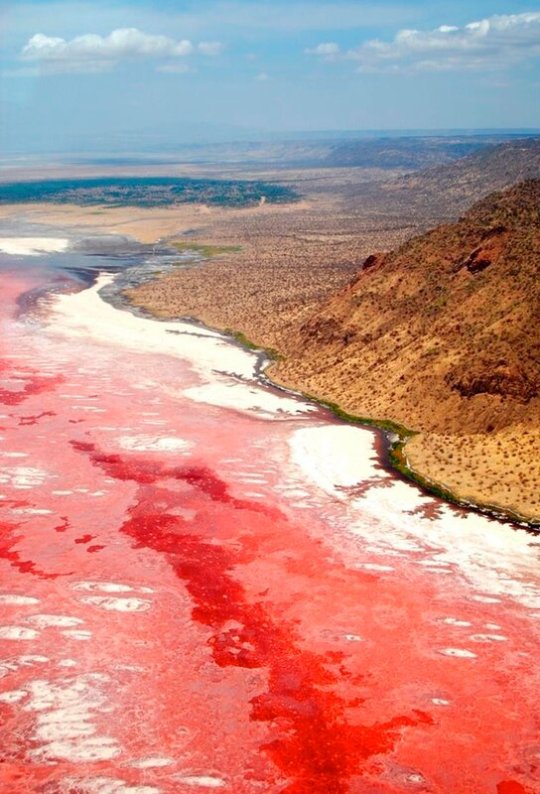
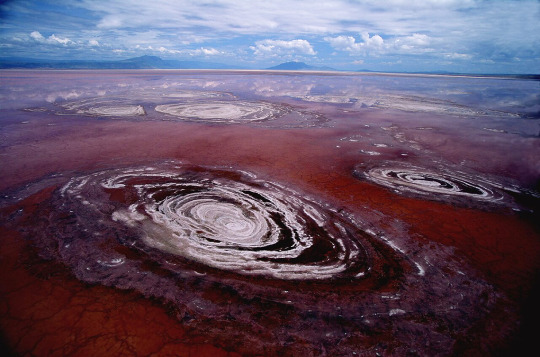





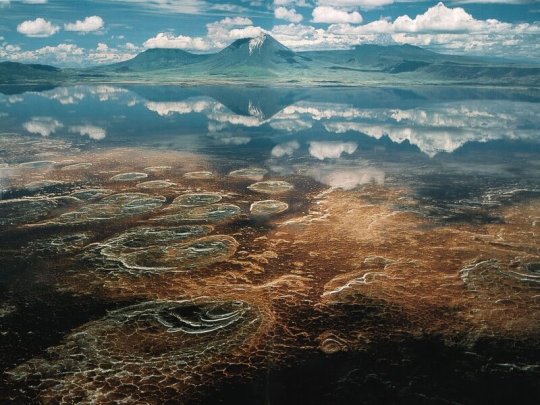
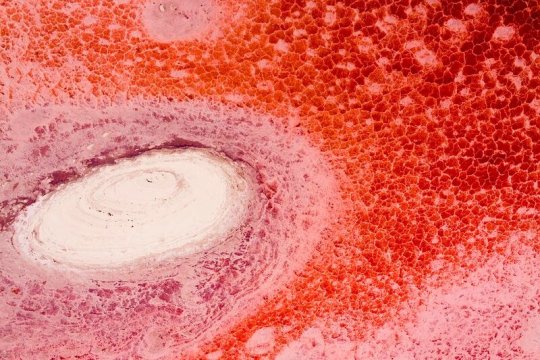
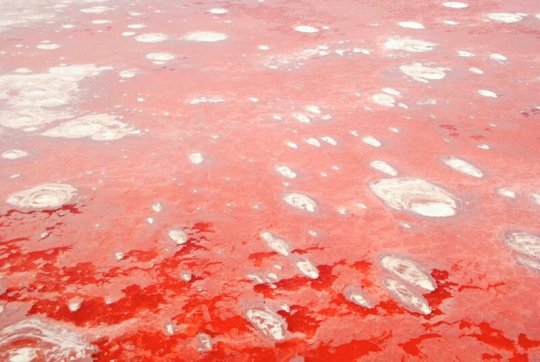
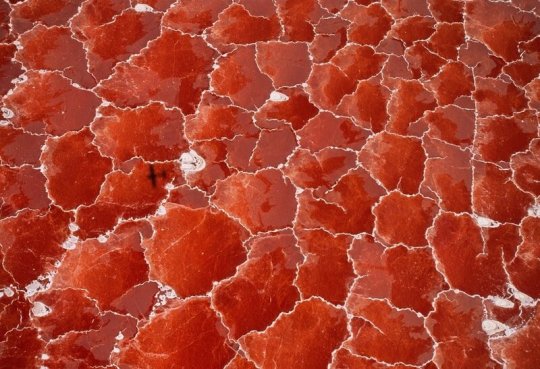

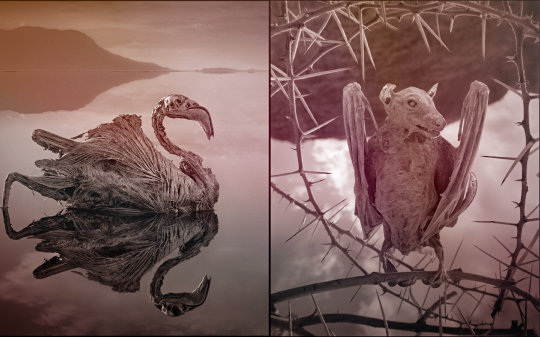
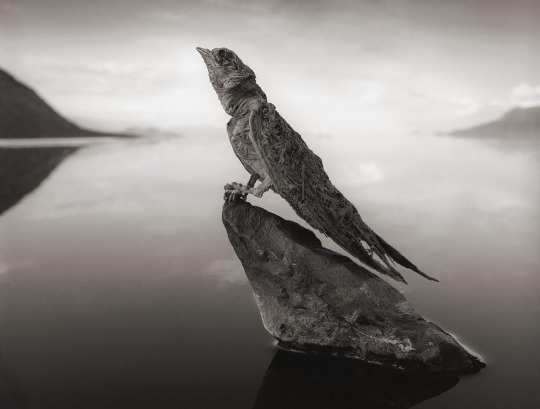

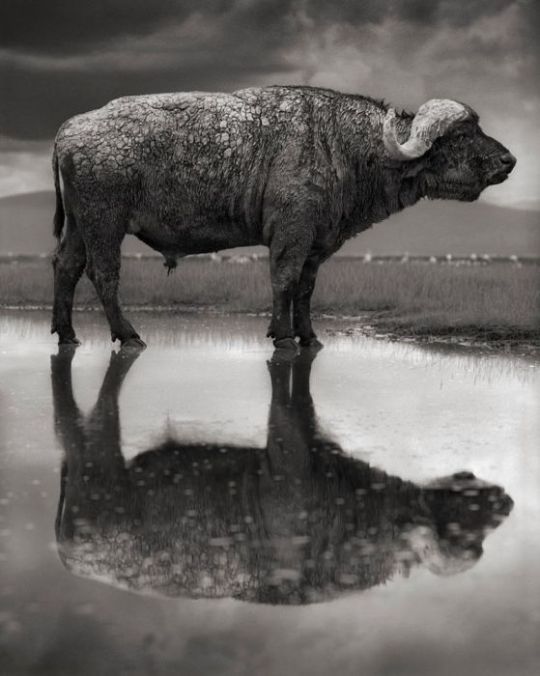
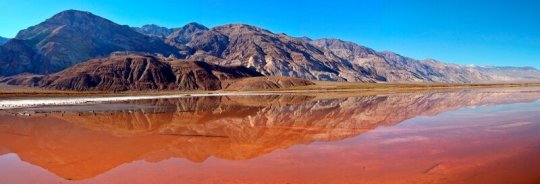
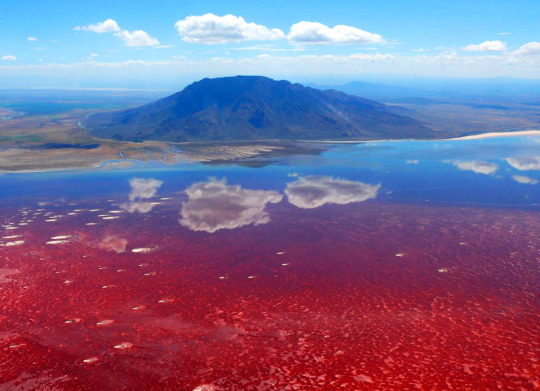
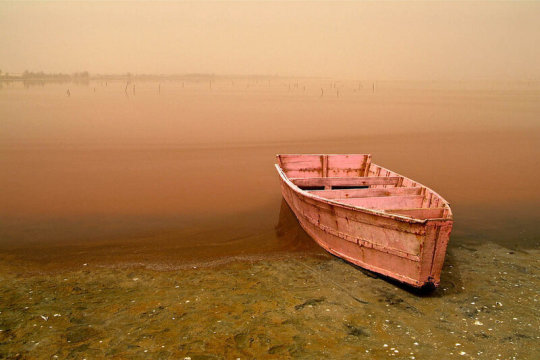
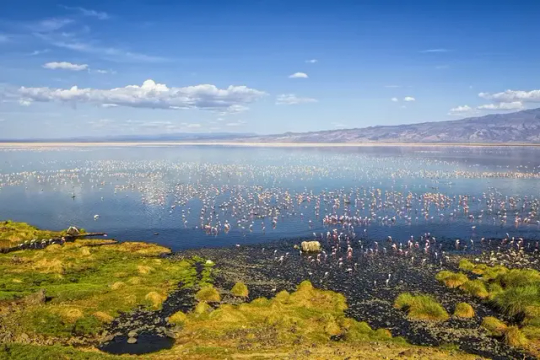
Озеро Натрон, превращающее животных в застывшие изваяния.
Озеро Натрон находится на севере Танзании, на границе с Кенией, недалеко от Национального парка Серенгети и заповедника Нгоронгоро. Озеро Натрон занимает площадь 56 км (35 миль) в длину и 24 км (15 миль) в ширину, но уровень воды меняется из-за испарения.
Вода из озера Натрон в Танзании буквально разъедает кожу, как только вы к ней прикоснетесь. Если хоть немного искупаться здесь - то кожа покроется волдырями и ожогами. Красивая корочка состоит из чрезвычайно агрессивного щелочного минерала с pH почти 12! Это почти в два раза выше здорового показателя для человека. И выше уровня аммиака, у которого pH всего 11. Мелкие животные, которые ненароком спускаются к воде, редко выживают даже после небольшого контакта с водой. Дождь, который идет в этих местах, называют призрачным. Потому что большая его часть испаряется, не долетев до поверхности.
Из озера Натрон вода не вытекает. В нее впадает одна река, а большую часть воды оно получает из родников и мелких ручейков. Однако вода просачивается через вулканическое вещество, где и обогащается щелочью. Озеро Натрон содержит очень много соли, соды и магнезита. Поверхность озера покрыта тонкой коркой соли. Вода здесь не всегда такая красная. Окрашивается она из-за деятельности микроорганизмов, которые прекрасно себя ч��вствуют в этой очень соленой воде. Явление это не постоянное. Происходит только когда вода испаряется и озеро становится максимально насыщенным щелочной солью - любимой средой здешних микроорганизмов.
У озера есть пресная и соленая части. Но будущая плотина может уничтожить соленую часть озера Здесь размножаются бактерии - им такой состав нипочем. Главная причина гибели здешних животных - именно бактерии, которые попадают в организм вместе с водой. Единственный представитель местной фауны, кто не боится этих бактерий - фламинго. Для фламинго это идеальное место. Они питаются местными водорослями, а "красная вода" является барьером для хищников. Поэтому на фламинго здесь почти никто не охотится.
Здесь умудряются выживать даже рыбы - к этой воде приспособилось два вида тиляпий. Вода в озере очень горячая - температура иногда поднимается до 50 ° C. Всему виной горячие источники. Однако у этого уникального природного объекта есть все шансы исчезнуть с лица земли. Власти здесь планируют построить гидроэлектростанцию и плотину. Соленая часть озера может исчезнуть, так как ее зальет пресной водой. Соленую воду же хотят использовать для добычи карбонат калия и перерабатывать ее в стиральный порошок. Опасность эти инициативы представляют для малых фламинго. Оказывается, 75% этих птиц появляются на свет именно на берегах этого озера.
Lake Natron, which turns animals into frozen sculptures.
Lake Natron is located in northern Tanzania, on the border with Kenya, near the Serengeti National Park and the Ngorongoro Conservation Area. Lake Natron is 56 km (35 mi) long and 24 km (15 mi) wide, but the water level changes due to evaporation.
The water from Lake Natron in Tanzania literally corrodes the skin as soon as you touch it. If you swim here even a little, your skin will be covered in blisters and burns. The beautiful crust consists of an extremely aggressive alkaline mineral with a pH of almost 12! This is almost twice as high as the healthy level for humans. And higher than the level of ammonia, which has a pH of only 11. Small animals that inadvertently go down to the water rarely survive even a short contact with the water. The rain that falls in these places is called ghost rain. Because most of it evaporates before it reaches the surface.
There is no water flowing out of Lake Natron. One river flows into it, and it gets most of its water from springs and small streams. However, the water seeps through volcanic matter, where it is enriched with alkali. Lake Natron contains a lot of salt, soda and magnesite. The surface of the lake is covered with a thin crust of salt. The water here is not always so red. It is colored due to the activity of microorganisms that feel great in this very salty water. This phenomenon is not constant. It only occurs when the water evaporates and the lake becomes maximally saturated with alkaline salt - the favorite environment of local microorganisms.
The lake has a fresh and salty part. But the future dam can destroy the salty part of the lake. Bacteria multiply here - they do not care about such a composition. The main reason for the death of local animals is the bacteria that enter the body along with the water. The only representative of the local fauna that is not afraid of these bacteria is the flamingo. This is an ideal place for flamingos. They feed on local algae, and the "red water" is a barrier for predators. Therefore, almost no one hunts flamingos here. Even fish manage to survive here - two species of tilapia have adapted to this water. The water in the lake is very hot - the temperature sometimes rises to 50 ° C. Hot springs are to blame. However, this unique natural object has every chance of disappearing from the face of the earth. The authorities are planning to build a hydroelectric power station and a dam here. The salty part of the lake may disappear, as it will be flooded with fresh water. They want to use the salt water to extract potassium carbonate and process it into washing powder. These initiatives pose a danger to lesser flamingos. It turns out that 75% of these birds are born on the shores of this lake.
Источник://t.me/places_on_earth, //www.travel.ru/wow/natron.html, /kulturologia.ru/blogs/231022/54558/, //www.kiwoitoafricasafaris. com/ru/Танзания-направления/озеро-Натрон/, /mail.kz/ru/ news/interesting/-faktov-ob-ochen-opasnom-ozere-natron-v-tanzanii, /dzen.ru/a/ ZEKreWvVMkhyndD7, /winter-borealis. livejournal.com/103782.html.
#Tanzania#nature#nature aesthetic#landscape photography#lake#Natron#red water#fossilized skeletons#salt#alkali#flamingo#sky#clouds#naturelovers#nature video#Танзания#озеро#Натрон#природа#Пейзаж#красная вода#соль#щелочь#окаменевшие скелеты#небо#облака#фламинго#природнаякрасота#видео
124 notes
·
View notes
Text

Grey-crowned Crane (Balearica regulorum), family Gruidae, order Gruiformes, Ngorongoro Conservation Area, Tanzania
ENDANGERED.
Photograph by��Ren Schiffer (@ren.schiffer.photography)
346 notes
·
View notes
Text
Millions of wildebeest, along with zebra and impala make the life-preserving journey across the plains of Tanzania towards Kenya, driven by an instinctual need to find food and, in so doing, ensure the survival of their herds.
The migration is the cycle of life playing out in real time. This phenomenon demonstrates the order and wisdom of nature – how changes in the seasons drive the movement and dictate the behaviour of wildlife. As the weather shifts and food sources dwindle or become more prolific, so the herds move in accordance with where grazing is more plentiful, ensuring their health and abundance.
Join us on our 16 day 15 night safari circuit in Kenya and Tanzania exploring some of the most renowned wildlife parks teeming with wildlife.
1 night Nairobi (Kenya)
2 night Amboseli national park (Kenya)
1 night lake Manyara national park(Tanzania)
2 night Ngorongoro conservation area(Tanzania)
3 nights Serengeti national park(Tanzania)
1 night Lake Victoria (Tanzania)
3 nights Masai Mara national reserve (Kenya)
1 night lake Nakuru national park (Kenya)
1 night Lake Naivasha(Kenya)
Email:[email protected] for a full itinerary or a tailor made safari experience.
www.soetexpedition.com
#magicalkenya#tanzania#travel#vacation#explore#vacation destinations#for you#wildlife#safari#nature#soet
29 notes
·
View notes
Text
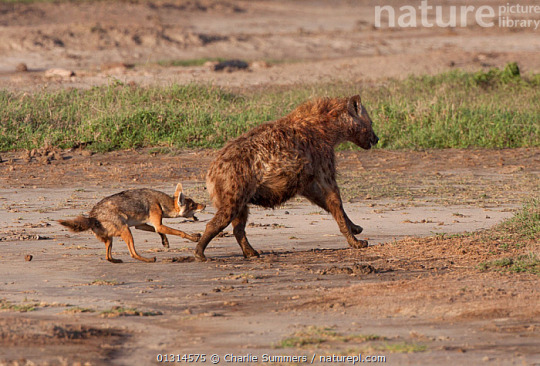
A female Serengeti wolf (Canis lupaster bea) chases a spotted hyena (Crocuta crocuta) away from her pups in a nearby den. Ngorongoro Conservation Area, Tanzania.
Photo © Charlie Summers / naturepl.com
423 notes
·
View notes
Text
15 places to travel to in your dr because why not
Feel free to add (I will also put an event themed list)
Part 2, Intro/Master post

1. Sigiriya, Sri Lanka

2. The Fairy Pools, Scotland

3. Coron, Philippines
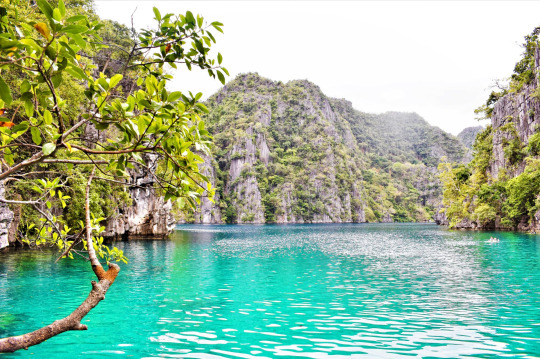
4. Taxila, Pakistan

5. Rock of Cashel, Ireland
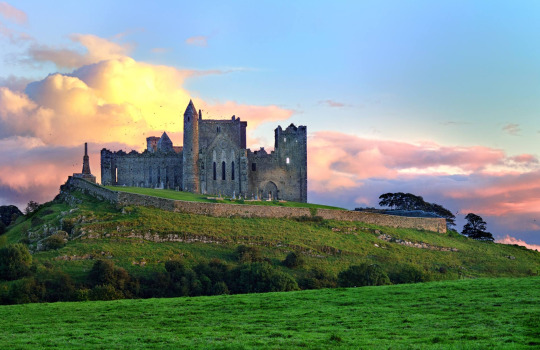
6. Leptis Magna, Khoms, Libya
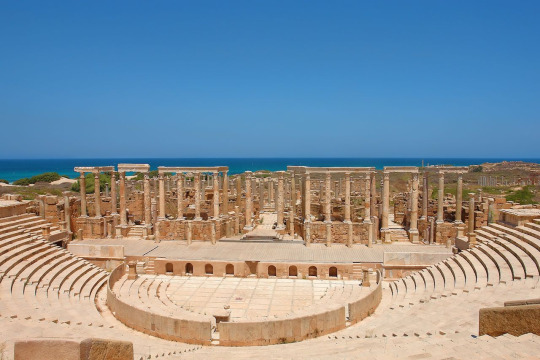
7. Aareschlucht, Bernese Oberland, Switzerland
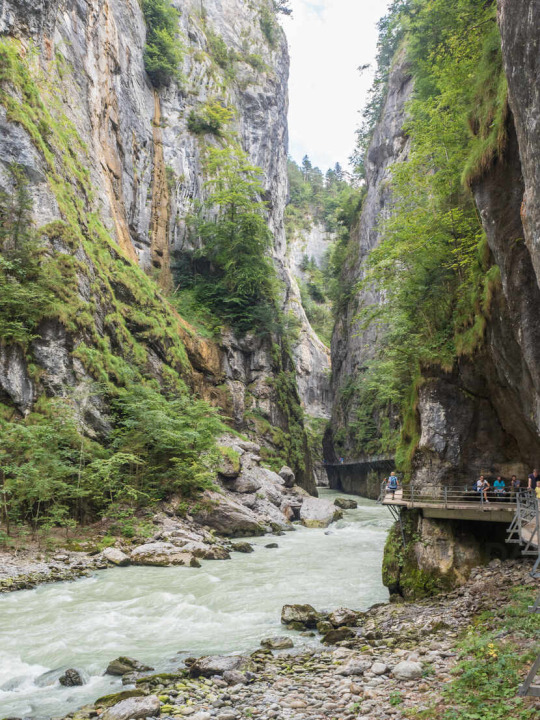
8. Waipoua Forest, New Zealand

9. Kaieteur Falls, Guyana

10. Ngorongoro Conservation Area, Tanzania

11. Colo-I-Suva Forest Park, Fiji
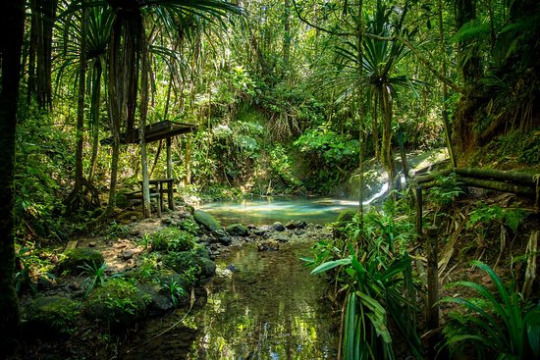
12. Iwokrama Forest, Guyana

13. Symi, Greece
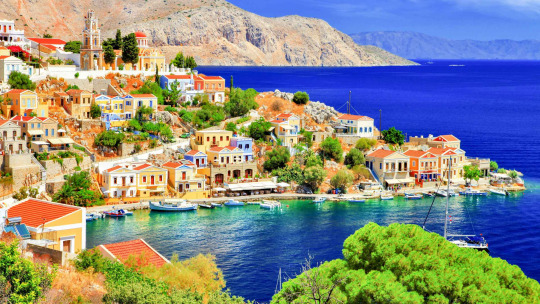
14. Odzala-Kokoua National Park, The Republic of Congo

15. Mỹ Sơn, Vietnam

#shifting antis dni#reality shifting#shiftblr#shifters#shifting blog#shifting realities#reality shifter#shifting community#dr#shiftingrealities#shifting script#shifting scenarios
24 notes
·
View notes
Text
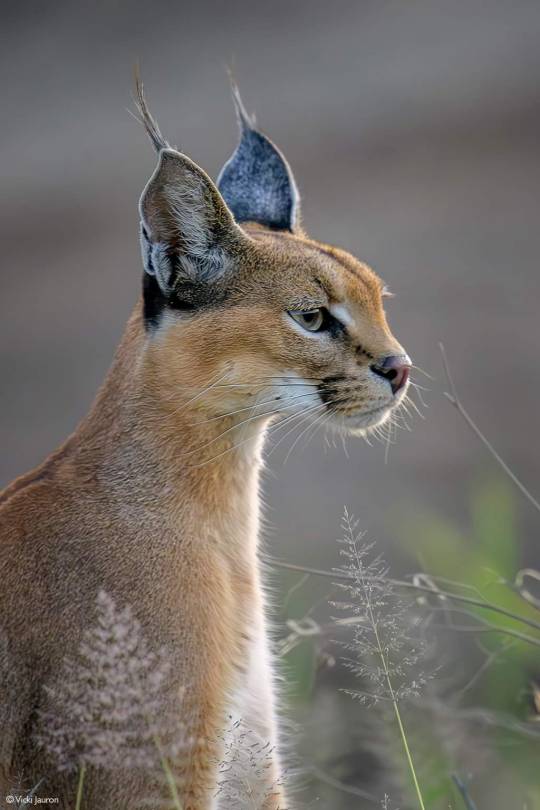
📷Close-up portrait of a caracal in the soft light of early evening. Ngorongoro Conservation Area, Tanzania. © Vicki Jauron (Photographer of the Year 2024 entry)
@vicjauron
113 notes
·
View notes
Text

Ngorongoro Conservation Area, Tanzania, World Heritage
19 notes
·
View notes
Note
top 5 birds youve seen while birding!!!!!
Hi Vero! I finally have the opportunity to answer this!
European Starling

Although non-native and rather garish - I think of their shine sometimes as the rainbow of oil-slick (sorry!😭), these have to take the top spot. Starlings are my spark bird - the species that got me into birding in the first place. I was sitting waiting for the train home from work last May feeling all deary, looked up, and was so enchanted by the iridescent beauty of these birds flitting around on the wires up there that I took several pictures, tried to figure out the species, and immediately started looking for birding opportunities in the city when I got home. Birding has been so good for me and has made me feel so much more alive this past year, but this first experience was so powerful I can hardly describe it. It was like I looked up and suddenly realized that the world could still be beautiful.
2. Northern Flicker

This is more of a site than a specific bird, but near my hometown there's a small nature preserve that I visited last year. There's an area of the trail with a cluster of very tall trees, and I spent nearly 45 minutes standing there enthralled watching birds flit from trunk to branch. I was most excited to see a flicker, which is one of my favorite birds. This is a woodpecker, but unlike most north american woodpeckers its plumage is cream and gray and it has spots. I've always thought it was so beautiful, and it was very special to see this one near my hometown.
3. Northern Cardinal

Specifically the one August @tothepond and I saw when he visited me last June!!! What a great spot, August! I love cardinals so much, they are so beautiful, and whenever I talk to experienced birders they're always a little bemused and appreciative that I'm so excited about common species, but cardinals aren't common to ME! LOOK at them!! A cardinal was also one of the very first birds I spotted for myself after many minutes of following a song and looking carefully through branches, so I have a deep personal fondness for it for that reason too. I would 100% rather look at a cardinal than a rare sparrow, for all these warm memories, both on my own and with friends.
4. Common Tern

Aren't they so elegant? I got incredibly lucky and happened to stumble into one fishing at a small pond in a city park. I got a pretty good look at it so I'm fairly positive on the ID, but it was moving too fast for a picture. It was a REALLY cool experience though and one of the highlights of the trip. A tern!!!
5. Lilac-breasted roller

This is one of the most famous birds of the Serengeti, and for good reason, I mean - look at that plumage! When I was in college, I had the opportunity to study abroad in Tanzania for a wildlife ecology and conservation program. We got the chance to visit Serengeti National Park and Ngorongoro Conservation Area, among other protected and wild areas in Tanzania. I wasn't into birding then, and more's the pity, because in the past year all I've had to go by are my hazy memories of colorful songbirds and large vultures, and the photos that other people have taken during that trip. But I remember this bird, because we saw it frequently and it was absolutely stunning, and it was the reason I was initially interested in serious birding (even if it went nowhere), as well as the reason I held onto my copy of Birds of Eastern Africa for so long after my trip has ended.
Special shoutout to the white-backed vulture tho because

SICK
Honorable mentions also to the indigo bunting - gorgeous, seen last year in the city park

atlantic puffin - seen many years ago in new brunswick

common loon - always a treat - often seen in Maine

blue jay - I JUST LOVE THEM

AND tufted titmouse - they're just so precious! and not the less cute for how common they are!

Thank you, Vero, for letting me ramble about the beautiful birds that I've seen this past year and before!!!
9 notes
·
View notes
Text
Tanzania: Indigenous Maasai Being Forcibly Relocated
Consult Communities, Restore Social Services in Ngorongoro Conservation Area

(Des Moines) –Tanzania’s government is forcibly relocating Indigenous Maasai residents from their homes and ancestral lands in the Ngorongoro Conservation Area (NCA), Human Rights Watch said in a report released today. Before further relocations are planned or carried out, the Tanzanian authorities should restore essential public services and consult affected communities to seek their free, prior, and informed consent.
The 86-page report, “It’s Like Killing Culture,” documents the Tanzanian government program that began in 2022 to relocate over 82,000 people from the NCA to Msomera village, about 600 kilometers away, to use their land for conservation and tourism purposes. Since 2021, the authorities have significantly reduced the availability and accessibility of essential public services, including schools and health centers. This downsizing of infrastructure and services, coupled with limiting access to cultural sites and grazing areas and a ban on growing crops, has made life increasingly difficult for residents, forcing many to relocate.
“The Maasai are being forcibly evicted under the guise of voluntary relocation,” said Juliana Nnoko, senior researcher on women and land at Human Rights Watch. “The Tanzanian government should halt these relocations and respect the rights of Indigenous people and rural communities by ensuring their participation in decisions affecting their rights and livelihoods through genuine consultation, access to information, and consent of Indigenous groups.”
The NCA, a United Nations Educational, Scientific and Cultural Organization World Heritage Site is managed by the Ngorongoro Conservation Area Authority (NCAA), a government entity. The area has been home to the Maasai for generations.
4 notes
·
View notes
Text
How Do Wildebeest Know When to Start Their Migration?
The Great Wildebeest Migration is a mesmerizing natural phenomenon that sees millions of wildebeest, accompanied by zebras and gazelles, traverse the plains of East Africa in search of greener pastures. One of the most intriguing aspects of this migration is how these animals seem to know exactly when and where to move, despite covering vast distances and facing numerous challenges along the way. So, how do wildebeest know when to start their migration? Let's delve into the fascinating world of animal instincts and environmental cues.
1. Seasonal Changes and Rainfall Patterns
Wildebeest migration is closely linked to seasonal changes and rainfall patterns in East Africa. During the dry season, which typically lasts from June to October, the grazing lands in the southern Serengeti and Ngorongoro Conservation Area become depleted. As the dry season progresses, food and water become scarcer, prompting the wildebeest to start moving northward in search of greener pastures and water sources that are replenished by seasonal rains.

2. Sensitivity to Photoperiod (Day Length)
Animals, including wildebeest, have internal biological clocks that are sensitive to changes in day length, also known as photoperiod. As the days grow shorter towards the end of the dry season, it triggers hormonal changes in wildebeest and prompts them to start their migration. This sensitivity to photoperiod serves as a reliable cue for the timing of the migration, ensuring that the animals move at the optimal time to find food and water resources.
3. Past Experience and Collective Memory
Wildebeest herds consist of animals of varying ages, from newborn calves to older individuals who have experienced multiple migrations. Older individuals within the herd pass down knowledge and migration routes to younger generations through collective memory. This accumulated wisdom ensures that the entire herd benefits from the experience of past migrations, enabling them to navigate familiar routes and anticipate challenges along the way.

4. Availability of Nutrient-Rich Grasses
The timing of wildebeest migration also corresponds with the availability of nutrient-rich grasses in different parts of their range. Following the rains, new grasses sprout in the northern Serengeti and Masai Mara regions, providing an abundant food source that sustains the migrating herds. Wildebeest are selective grazers and prefer young, tender grass shoots, making the timing of their migration critical to accessing these nutrient-rich resources.
5. Social Dynamics and Herd Behavior
Wildebeest are social animals that typically migrate in large herds, which can number in the hundreds of thousands. This collective behavior serves several purposes, including protection against predators and sharing of knowledge about migration routes and timing. Social cues within the herd, such as increased restlessness and movement among individuals, often indicate the imminent start of migration, signaling to the entire herd that it's time to move.

6. Adaptation to Environmental Changes
Through millennia of adaptation and natural selection, wildebeest have evolved to synchronize their migration with the changing environmental conditions of East Africa. This adaptability ensures their survival in a dynamic and often harsh landscape, where the availability of food and water fluctuates seasonally. By timing their migration to coincide with periods of abundant resources, wildebeest maximize their chances of survival and reproductive success.
Conclusion
The timing of the Great Wildebeest Migration is a testament to the remarkable instincts and adaptations of these iconic African herbivores. By responding to environmental cues, including seasonal changes, rainfall patterns, and social dynamics within the herd, wildebeest ensure that they migrate at precisely the right time to sustain themselves and their offspring. This annual spectacle not only showcases the beauty of nature but also underscores the intricate ways in which animals have evolved to thrive in their natural habitats.
2 notes
·
View notes
Note
Ngorongoro Crater Conservation Area, Tanzania

6 notes
·
View notes
Text
Top Tourist Attractions in Africa That You Have to See with Your Own Eyes

Africa is a continent of unparalleled beauty and diversity, boasting some of the world's most spectacular natural and cultural wonders. Here are some must-visit destinations that offer unforgettable experiences:
Serengeti National Park, Tanzania
Home to the iconic Great Migration, Serengeti National Park is one of Africa's premier wildlife destinations, teeming with lions, elephants, and other fascinating species against the backdrop of sweeping savannahs.
Victoria Falls, Zambia and Zimbabwe
Known as the "Smoke that Thunders," Victoria Falls is one of the largest and most awe-inspiring waterfalls on the planet, offering breathtaking views and thrilling adventures for visitors.
Pyramids of Giza, Egypt
The Pyramids of Giza stand as a testament to the ingenuity and architectural prowess of ancient Egypt, captivating travelers with their grandeur and mystique.
Table Mountain, South Africa
Dominating the skyline of Cape Town, Table Mountain offers panoramic views of the city and the surrounding coastline, making it a favorite destination for hikers and nature enthusiasts.
Sahara Desert, Multiple Countries
The Sahara Desert is the world's largest hot desert, spanning multiple African countries and offering visitors the chance to experience its vast and mesmerizing landscapes.
Okavango Delta, Botswana
A UNESCO World Heritage Site, the Okavango Delta is a pristine oasis in the heart of the Kalahari Desert, attracting travelers with its rich biodiversity and unparalleled opportunities for safari adventures.
Mount Kilimanjaro, Tanzania
Africa's highest peak, Mount Kilimanjaro, beckons adventure seekers from around the globe with its challenging but rewarding trekking routes and stunning views from the summit.
Kruger National Park, South Africa
Renowned for its abundant wildlife and conservation efforts, Kruger National Park is a must-visit destination for safari enthusiasts, offering the chance to spot the Big Five and other iconic African species.
Bwindi Impenetrable National Park, Uganda
Home to roughly half of the world's remaining mountain gorillas, Bwindi Impenetrable National Park offers visitors the rare opportunity to encounter these magnificent primates in their natural habitat.
Masai Mara National Reserve, Kenya
Famous for its spectacular wildlife sightings, including the annual wildebeest migration, the Masai Mara National Reserve offers visitors the chance to witness the drama of the African savannah up close.
Ngorongoro Conservation Area, Tanzania
A UNESCO World Heritage Site, the Ngorongoro Conservation Area is home to the Ngorongoro Crater, a natural amphitheater teeming with wildlife and offering some of the best game viewing opportunities in Africa.
Marrakech, Morocco
A vibrant city steeped in history and culture, Marrakech enchants visitors with its bustling souks, stunning architecture, and lively atmosphere, making it a must-visit destination in North Africa.
Sossusvlei Dunes, Namibia
Rising from the heart of the Namib Desert, the towering red dunes of Sossusvlei are a photographer's dream, offering stunning vistas and unforgettable experiences for adventurous travelers.
Seychelles Beaches, Seychelles
With their pristine white sands and crystal-clear waters, the beaches of the Seychelles are paradise on earth, perfect for relaxation, water sports, and romantic getaways.
Cape Winelands, South Africa
Renowned for its picturesque vineyards and world-class wines, the Cape Winelands region offers visitors the chance to indulge in wine tastings, gourmet cuisine, and scenic drives through rolling hills and valleys.
These are just a few of the many incredible attractions that Africa has to offer. Whether you're seeking wildlife encounters, cultural immersion, or simply breathtaking scenery, Africa has something for everyone to enjoy.
2 notes
·
View notes
Text

Pin-tailed Whydah (Vidua macroura), male displaying to female, family Viduidae, Ngorongoro Conservation Area, Tanzania
photograph by Barbara Fleming
251 notes
·
View notes
Text
Lunch
June 4, 2024
There are guides. And then, there are guides! Can’t say we’ve had a bad one, but a few really stand out. Anaeli is one of those. He’s been guiding for about 25 years, since he was about 25, and his experience shows. He’s not only great at the substance of the job, but he’s been great at reading us, being responsive and proactive when appropriate. And most of all, his sense of what and when something might just be worth waiting for is impeccable.
Coffee was, of course, delivered to our room via the horizontal dumbwaiter and after getting ready and packing, we headed to the lodge for breakfast. This place has been pretty special. Too bad we didn’t have a day to chill and enjoy. But our marathon was ready to continue. Johnathan was grateful for the tip when Jill handed him an envelope at breakfast, but he asked us to hold it until the full staff was assembled to bid us farewell. A class act. We did so, and left as they all waived goodbye.
Joseph, a Maasai who grew up in the local village but has since moved away, was our guide for a walk to the village and we were escorted by an armed park ranger. It was a bit treacherous walking down the steep drive with dry sand and pebbles, but fascinating as Joseph would stop here and there to describe plants, flowers, and the medicinal qualities of each. The Maasai have home grown remedies for everything from skin ailments (Seb) to cough (Seb) to remedies for a bad tummy (never know for Seb or Jill), and even soft leaves appropriate for “bush TP.” Anaeli picked us up part way to the village to shorten the trip. On arrival at the village, one gent was there to greet us. Joseph and he escorted us in and placed us well to watch the welcome march and dance that the villagers performed for us, as well as a jumping contest of the younger men. They were all dressed in the wonderfully vivid, bright colored, mostly plaid garb. The women additionally have large earrings, necklaces and rigid beaded collars with bells that bounce when they dance. Seb joined in on invitation, making a general fool of herself, but what the heck. The men demonstrated how they start a fire (for a bush bar-b-que) and then we toured a home - stick structure with cow dung walls and roof. Iit doesn’t get more simple than this living, but these folks seem happy. They are, of course, paid for opening up their homes, but it felt less intrusive than we expected.
The drive out was stunning. It’s hard to describe just how vast things seem. From up on the ridge of the Ngorongoro Crater, one looks down across miles and miles of planes with Acacia trees on the hills and dotting the landscape. We passed some Maasai selling honey that Anaeli suggested is not up to good sanitary standards and various groups of Maasai walking here and there. When we got down to ground level (from somewhere on the order of 7000 ft), the plains likewise went on forever. A photo can do no justice to the horizon that one can see, hazy but amazing.
The day was long. On bumpy dirt roads, it took us a while to get out of the conservation area - a fair number of trucks and vehicles kicking up dust, particularly those that speed along. (We’re grateful that Anaeli is a carful driver!). At one point, some workers were attempting to regrade the road, now that rainy season is over, but were doing each side, leaving a peak in the middle and a serious slant on each side of the road. And they seriously added to the dust situation. We saw some animals including baboons, giaraffes, gazelles, as well as herds of sheep and cows belonging to the Masai. One of the notable impressions is seeing, in the vast landscape, a pop of color where a Masai herder or other is wandering.
We made a quick stop near Olduvai Gorge, where the earliest human was discovered. Onward, continuing to bump along, we crossed into the Serengeti and shortly thereafter came to a stop for the obligatory park entrance fees (and another bathroom break - gotta’ take it as opportunities present!). Anaeli was cute, urging us to drink our water, and giving us deadlines to finish. So good to know he’s looking out for us.
A little into the Serengeti, there was a regal male lion just at the side of the road. We almost went by it, but eagle-eyed Anaeli spotted it and backed up a bit. He saw a couple other vehicles stopped ahead and speculated that it might be a few girls. No! Better! It was two cheetahs. They were quite well camouflaged in the grass. We pulled up along with the three or four land cruisers stopped already. It was fun to watch them alternate sitting up and scanning around and lying back down to rest. We were close enough that we could see them doing some heavy breathing in the sun and heat. Anaeli thought they might move across the street to some shade. He said that cheetah sightings are fairly rare in the Serengeti (there are relatively few, as they are less competitive for food than other animals), and hinted that we might like to eat our packed lunch while we wait to see if they make a move. All the while snapping the periodic photo (cute little buggers that they are), we all of a sudden realized there was a third. At that point, Anaeli realized they were likely brothers or colleagues hanging out together. He suggested and we agreed to wait to see what happens. All of the other vehicles got bored and left. Another one approached and stopped. At that point, Anaeli spotted a young, limping wildebeest in the distance and he foreshadowed what was to come. The poor soul was zig-zagging right toward us. No way we could get that lucky. No way the three cheetahs could get that lucky. One seemed to spot the wildebeest. Then he crouched down. The other two were oblivious. He got up and down a few times and seemed to get more attentive. Then #3 saw him. #2 was still oblivious, looking our way. Poor unaware wildebeest kept coming. Soon he was approaching and it was quite clear what was going down. In a flash, all three cheetahs got up and went into prone positions and as if on queue, they charged. WOW. We sat riveted, as the wildebeest tried to evade, but it was never going to happen with three cheetahs. They chased, weaved, lept on him and finally brought him down. They disappeared for a bit. Then two popped up to scan the horizon (where IS that lion that was oh-so-close, and which way is the wind blowing - seemingly in their favor…). Finally all three popped up together - the beast was clearly a former beast waiting for the three to LUNCH!
What an amazing experience to see the kill from start to finish. We finally pulled away and continued our journey, understanding what the Serengeti is all about - nature, survival of the fittest, and the circle of life.
The rest of the afternoon was driving. A lot of bumps. And more bumps. And more bumps. The landscape over time gave way to rock outcroppings (some for “Simba” and some for Masai) then more and more trees. Along the way, we observed the great migration. A whole new kind of “wow.” At times hundreds, thousands of wildebeasts with (only sometimes) zebras in the mix. They move in lines or groups,heading to where new, fresh grasses will be. At times they stop en-masse to chomp on some grass, some guys romping or fighting, and all the while, loads of grunts from the huge herds. It is truly a sight to behold, particularly on several occasions when we stopped and were totally surrounded with animals as far as they eye could see! It turns out that, contrary to popular belief - the great migration is not simply a 2x/year seasonal event. They come and go from Kenya 2x/year (maybe it’s a marketing thing for Kenyan tourism?) but they migrate throughout much of the year all around Tanzania, to find the grass they need to survive. They decimate a region, poop excessively, and then by the time they ever get back to that area, the poop had fertilized the soil and the new grass is wonderful again.
The rest of the drive was interesting by way of evolving scenery, with interesting new animal sightings here and there (a cobra on the road, for example, who slithered off before we could snap a photo), and some classic big game, still a rush to see.
After going through the central Serengeti, we headed west toward our destination. It was amazing that Anaeli knew where to go with all we were doing was following reasonably well-worn and less worn tracks in the grass. We asked if he ever gets lost and he admitted that he has and on occasion still does (but always finds his way out!). We remain convinced that later in the afternoon was one of those occasions. He looked around intently for a while, had a radio conversation that we couldn’t understand, but did not admit to not knowing where we were going. Was it just our imagination that we doubled back? And then backtracked again? It was at this point that Jill passed an iPhone note to Seb asking her to check the gas gauge (thankfully still at 30%). At any rate, with only one near stuck-in-the mud situation (he stopped, got out, assessed and made the right call to get us out), we made it to camp by about 5:00 PM.
2 notes
·
View notes